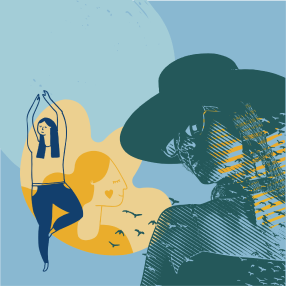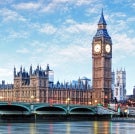You may have come across pictures or videos online of large groups of individuals joyfully tossing vibrant powder and paint at each other as a celebration of Holi Festival, taking place on March 25th this year.
Why does this beautiful rainbow phenomenon occur annually? And what is the origin of its name?
It’s a commemoration of the defeat of evil by good.
Holi, a festival that celebrates the arrival of spring, is observed as a national holiday in India and Nepal. It is typically held on the last full moon day of the winter season, as per the Hindu lunar calendar.
The origins of the religious holiday of Holi are rooted in the story of Holika (hence the holiday’s name). Holika was the sister of the demon king Hiranyakashipu and was killed in a fire as punishment for trying to kill her nephew Prahlad. Prahlad’s prayers to the god Vishnu saved him from the fire.
2. It starts with bonfires
In India, the festival of Holi begins the night before with the traditional lighting of bonfires, known as Holika Dahan, to symbolize the fire that killed Holika. Crowds gather around the bonfires, which may include an effigy of Holika, as they celebrate the arrival of spring. The warmth of the flames represents the soon-to-come warmer weather.
3. The colours symbolise equality
Holi is commonly referred to as the ‘festival of colours’ and is a celebration of spring’s bright shades. The use of colorful powders and waters represents flames, but there is a greater significance to the tradition of covering one another with pigmented ‘abir’ powder and ‘gulal’ paste.
The colors serve as a powerful equalizer, creating a sense of equality (or equal disarray) among people regardless of their social class, customs, or faith.
Food is a crucial aspect of the festivities.
During Holi, no celebration is considered complete without a scrumptious assortment of sweets as part of the spread.
In order to sustain all the high-energy paint throwing, large quantities of desserts are provided, such as Gujiya, puffy pastries filled with dried fruit and served with syrup; malpua, small deep-fried pancakes; and thandai, a sweet, creamy beverage infused with cardamom, saffron, fennel seeds, and rosewater.
5. This beverage is known to be a stimulant
Bhang is a popular beverage in India that is made with cannabis and is often enjoyed during the festival of Holi. It is typically mixed with lassi or thandai, a refreshing summer drink.
Despite being illegal, the consumption of bhang is widely practiced in certain regions of India
Although cannabis is not allowed in India according to the law, the law does not specify the use of leaves, which are used to create bhang. In spite of its illegality, bhang is commonly consumed in specific areas of India.
Nepal celebrates Holi with unique traditions.
During the celebration of Holi in Nepal, a special bamboo pole known as a ‘chir’ is installed in the capital city of Kathmandu. The pole is adorned with strips of cloth as symbols of good luck and is then set ablaze in a bonfire.
In Nepal, people not only use traditional paints and powders, but they also engage in water balloon fights known as “lolas”.
All around the globe, it is commemorated.
Although the main festivities occur in India and Nepal, individuals worldwide come together annually to celebrate the holiday, for various reasons such as religious beliefs or enjoyment, in cities such as Berlin and Barcelona, Singapore and Suriname (subject to pandemic restrictions).
The given source is from the website Independent.co.uk.



